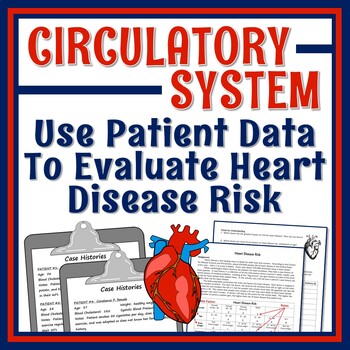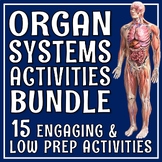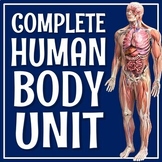Human Body Organ Systems Circulatory System Activity Heart Disease
Flying Colors Science
4.8k Followers
Grade Levels
6th - 8th
Subjects
Resource Type
Standards
NGSSMS-LS1-3
Formats Included
- PDF
- Google Apps™
- Easel Activity
Pages
4 pages
Flying Colors Science
4.8k Followers

Includes Google Apps™
The Teacher-Author indicated this resource includes assets from Google Workspace (e.g. docs, slides, etc.).
Easel Activity Included
This resource includes a ready-to-use interactive activity students can complete on any device. Easel by TPT is free to use! Learn more.
What educators are saying
My students enjoyed this activity and it really got them thinking. It was straightforward enough to use as a sub plan but interesting enough to allow for some discussions.
My students loved "being doctors" as they worked through this activity. Everybody was engaged and spoke of how much fun it was. "Can we do something like this again?" is always a great thing to hear :) Thank you!
Also included in
- SAVE $20 off list prices! Includes human body systems activities that are easy on the teacher and fun for kids! Includes 15 FUN, fresh, and thoroughly engaging anatomy activities to supplement your Human Body Systems unit. Teachers will appreciate these resources because:The included lessons are hPrice $39.99Original Price $60.92Save $20.93
- Never search for "something to do tomorrow" ever again! This bundle contains PRINT AND GO lessons, NO PREP activities, LOW PREP labs, and ENGAGING articles to supplement and thoroughly enhance a life science course. Every included resource is easy to implement, standards-based, and high-quality.Price $399.99Original Price $750.85Save $350.86
- SAVE OVER 40% off list prices! This is a complete ACTIVITY-BASED Organ Systems lesson unit. This bundle includes every resource I use to teach and assess NGSS MS-LS1-3. All of the work has been done for you - from start to finish! An included unit plan tells you what to teach and when, so you don'Price $109.00Original Price $186.36Save $77.36
- SAVE OVER 35%! These resources are a DONE FOR YOU solution to teaching the cardiovascular system! Includes FUN and ENGAGING activities, an introductory presentation in both PPT and Google Slides, and a final check-in quiz.This Bundle Includes:✅ Presentation (with Cloze notes) to introduce the circPrice $15.50Original Price $24.49Save $8.99
Description
Let your students BE THE DOCTOR! Engage students in a real-world study of the cardiovascular system and heart disease at a middle school level.
Includes both PRINT and GOOGLE SLIDES versions.
⭐ Find this activity in our Circulatory System Unit!
In this anatomy activity, students will:
- Read a brief background about heart disease and how doctors evaluate risk for heart disease (simplified for middle schoolers).
- Use a "Heart Disease Risk" chart to evaluate the risk factor score for 6 patients.
- Answer analysis questions about which patients were at the lowest and highest risk of heart disease and the factors that put them in these categories.
⭐ Need an EASY and NO PREP way to teach the respiratory system?
⭐ Try our NO PREP Circulatory System Stations Activity!
Teacher Notes:
- Answer key included.
- Supports NGSS MS-LS1-3.
- This resource is NOT editable.
- This is the same as our Valentine's Day heart disease resource. If you own that, you already have this!
⭐This resource is offered at a discount in our COMPLETE UNIT for this topic!
⭐Includes everything you need to TEACH and ASSESS Human Body Systems!
Total Pages
4 pages
Answer Key
Included
Teaching Duration
N/A
Report this resource to TPT
Reported resources will be reviewed by our team. Report this resource to let us know if this resource violates TPT’s content guidelines.
Standards
to see state-specific standards (only available in the US).
NGSSMS-LS1-3
Use argument supported by evidence for how the body is a system of interacting subsystems composed of groups of cells. Emphasis is on the conceptual understanding that cells form tissues and tissues form organs specialized for particular body functions. Examples could include the interaction of subsystems within a system and the normal functioning of those systems. Assessment does not include the mechanism of one body system independent of others. Assessment is limited to the circulatory, excretory, digestive, respiratory, muscular, and nervous systems.










